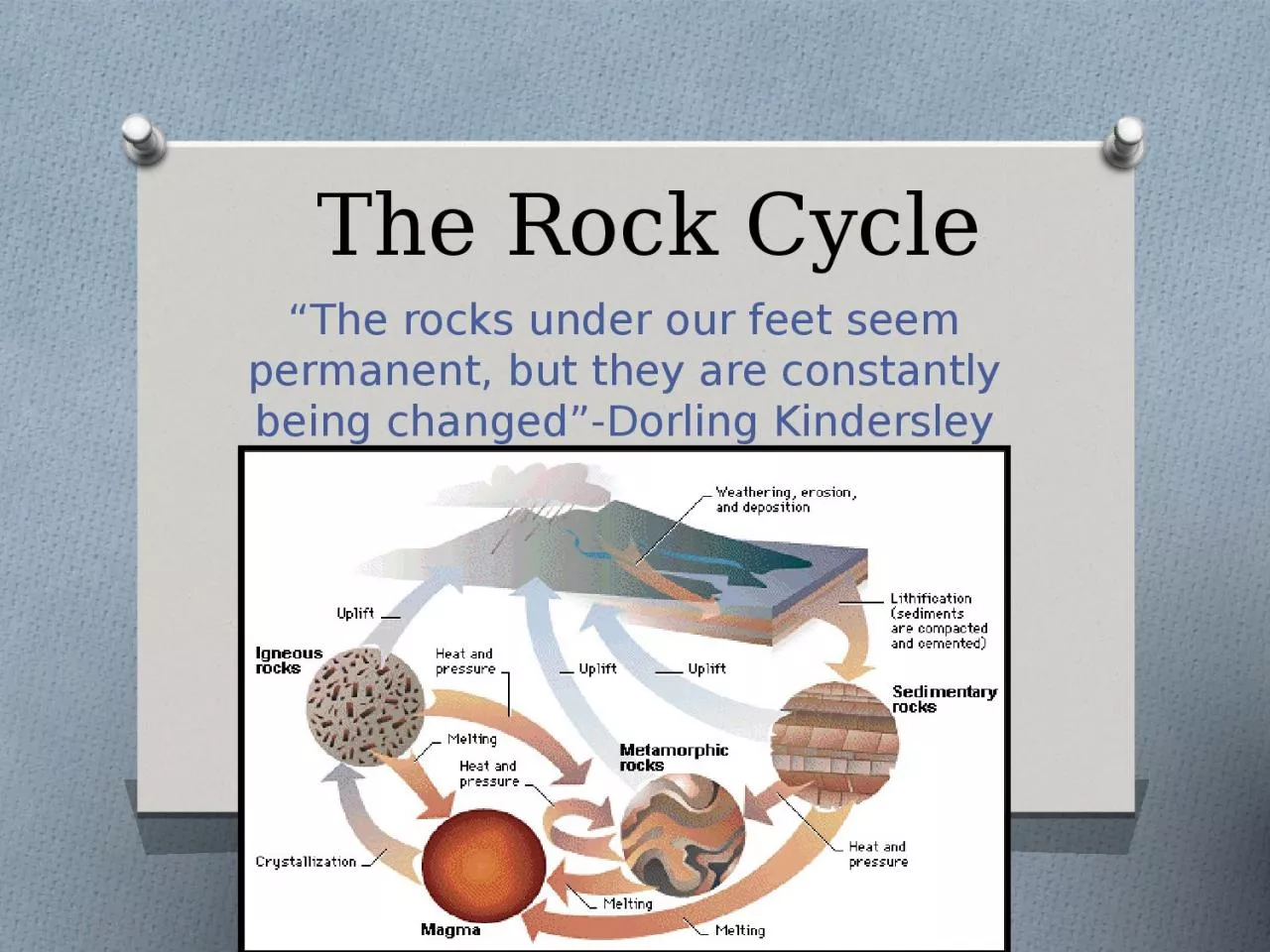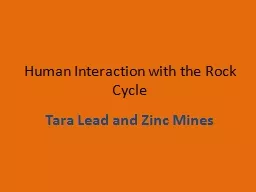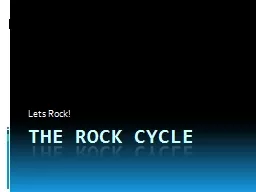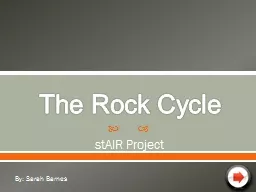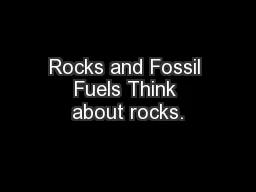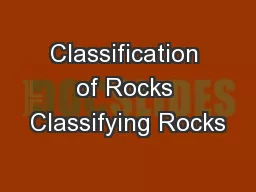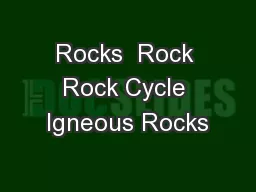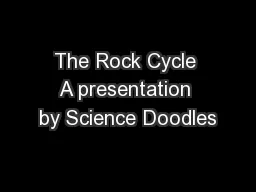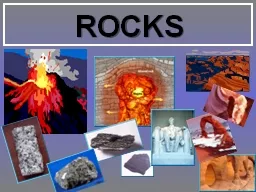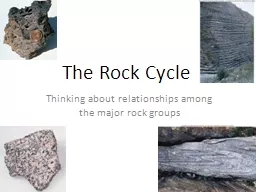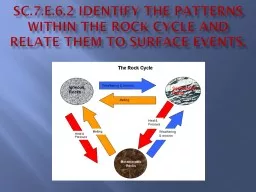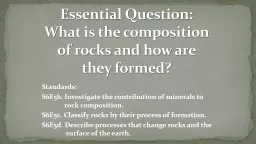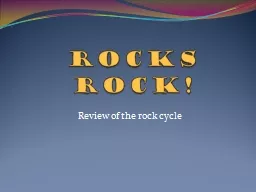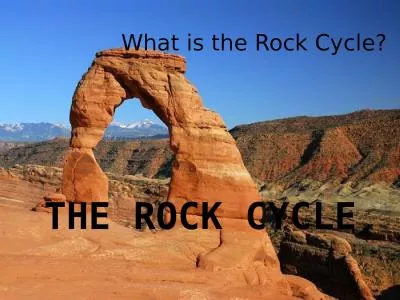PPT-The Rock Cycle “The rocks under our feet seem permanent, but they are constantly being
Author : skylar | Published Date : 2023-09-20
I Rocks A Rock a solid material made of one or more minerals organic materials andor chemical substances MEMORY JOGGER A mineral is a naturally occurring inorganic
Presentation Embed Code
Download Presentation
Download Presentation The PPT/PDF document "The Rock Cycle “The rocks under our fe..." is the property of its rightful owner. Permission is granted to download and print the materials on this website for personal, non-commercial use only, and to display it on your personal computer provided you do not modify the materials and that you retain all copyright notices contained in the materials. By downloading content from our website, you accept the terms of this agreement.
The Rock Cycle “The rocks under our feet seem permanent, but they are constantly being: Transcript
Download Rules Of Document
"The Rock Cycle “The rocks under our feet seem permanent, but they are constantly being"The content belongs to its owner. You may download and print it for personal use, without modification, and keep all copyright notices. By downloading, you agree to these terms.
Related Documents

